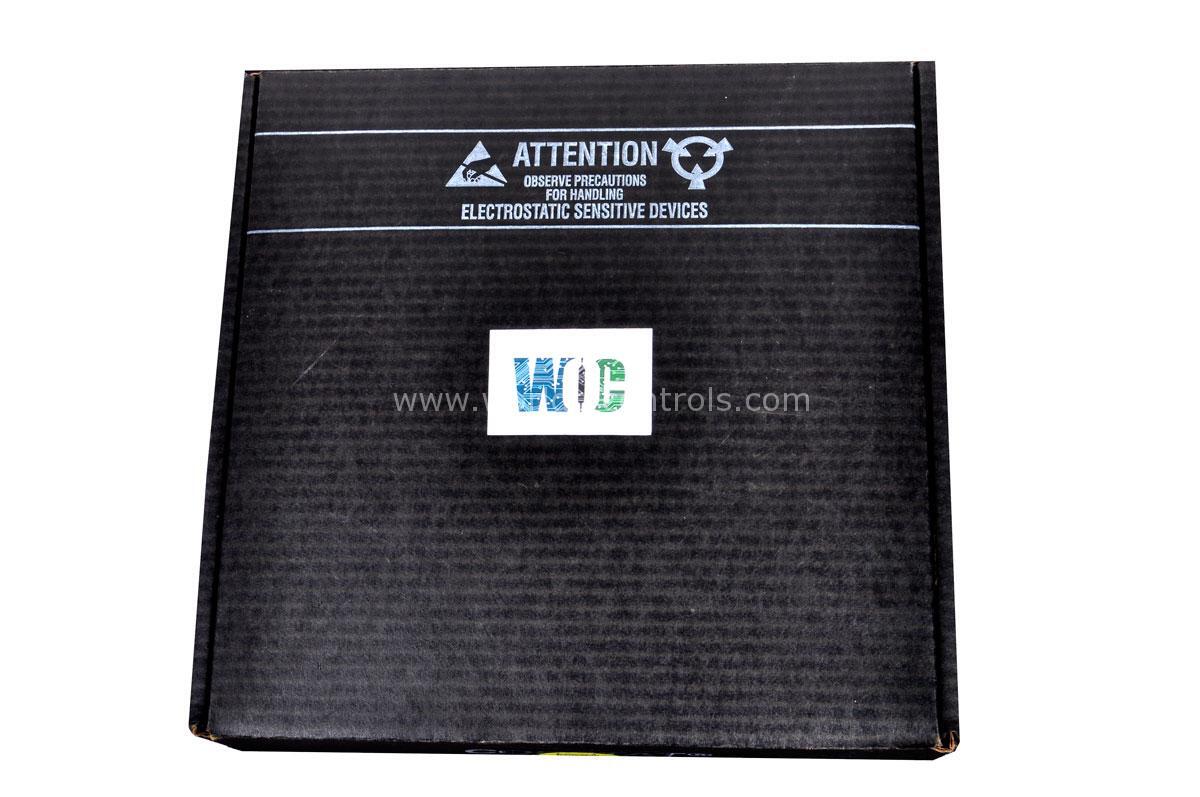SPECIFICATIONS
Part No.: IS200DPWAG1AAB
Manufacturer: General Electric
Country of Manufacture: United States of America (USA)
Input filter: Hardware filter, 4 ms
Power consumption: 20.6 watts
Temperature rating: 0 to 60 oC
Size: 33.02 cm high x 10.16 cm wide
Temperature Operating: -30 to 65 o C
Product Type: Transducer Power Distribution terminal board
Availability: In Stock
Series: Drive Control
Functional Description
IS200DPWAG1AAB is a Transducer Power Distribution terminal board developed by GE. It is a part of Drive Control series. The Transducer Power Distribution (DPWA) terminal board is a DIN-rail mounted power distribution board designed for reliable operation in industrial settings. It accepts an input voltage of 28 V DC , which is supplied through a two-pin Mate-N-Lok connector. This configuration allows for robust connectivity and facilitates the use of redundant power supplies, enhancing system reliability.
Features
- The input voltage can be sourced from a floating isolated voltage source, providing flexibility and ensuring electrical isolation for sensitive applications. To center the floating power source on the SCOM, the DPWA incorporates two 1 kilo-ohm resistors connected between the positive and negative input power lines. This setup stabilizes the input voltage and supports the consistent performance of connected devices.
- Additionally, the DPWA features attenuated input voltage for external monitoring purposes, enabling real-time monitoring and adjustment of input parameters as needed. Output power of 12 V DC is distributed to external devices via a Euro-type terminal block, utilizing screw terminals and AWG 18 twisted-pair wiring for secure connections. This configuration ensures reliable power distribution and facilitates straightforward installation and maintenance processes.
- It provides three output terminal pairs, with a total output rated from 0 to 1.2 A. These outputs are compatible with the XDSAG AC interface board, supporting seamless integration with a variety of industrial control systems and devices. Furthermore, the outputs are equipped with short-circuit protection mechanisms, ensuring safety and preventing damage in the event of electrical faults. The self-recovering feature of the outputs enhances system uptime by automatically restoring operation once the fault condition is resolved.
Diagnostics
- Diagnostics for the terminal board are designed to facilitate comprehensive monitoring of input power conditions, ensuring operational reliability in industrial applications. The board features three voltage monitor outputs, each attenuated by a 6:1 ratio, allowing for accurate readings of the 28 V DC input using a 5 V DC full-scale input. These outputs play a critical role in assessing the health of the power inputs and detecting potential issues.
- Terminal 1 (PSRet) provides the attenuated voltage present on the power input return line. This output allows for monitoring and verification of the voltage level on the return path, essential for ensuring proper grounding and electrical continuity.
- Terminal 3 (PS28VA) displays the attenuated voltage present on the P1 positive power input line. This output enables monitoring of the voltage level from the primary power source connected to connector P1, providing insights into the stability and integrity of the main power input.
- Terminal 5 (PS28VB) indicates the attenuated voltage on the P3 positive power input line. This output is crucial in redundant systems, allowing for monitoring of the voltage from the redundant power source connected to connector P3. Discrepancies between PS28VA and PS28VB readings can indicate a failed or missing redundant input, enabling timely intervention and maintenance to ensure continuous operation.
- Terminals 2, 4, and 6 serve as return paths for the attenuator signals, completing the circuit for accurate voltage monitoring. These terminals are integral to maintaining proper signal integrity and ensuring reliable diagnostic readings across the board.
- In systems where the 28 V DC power source is floating and centered on SCOM, both positive and return voltages should ideally be of the same magnitude relative to SCOM. Any deviation from this balance, such as a negative voltage on the return or discrepancies in voltage levels between PS28VA and PS28VB, may indicate potential issues like ground faults or power supply anomalies.
- The detection of such anomalies is critical, as they can impact system performance and safety. For instance, a ground fault in the input power may manifest as the positive or return attenuated voltage nearing SCOM, while the other signal may double in voltage, indicating a potential fault condition.
- By leveraging these diagnostic features, the DPWA terminal board enhances operational visibility and facilitates proactive maintenance strategies. This proactive approach ensures early detection of issues, minimizes downtime, and optimizes system reliability in demanding industrial environments.
The WOC team is always available to help you with your Drive Control requirements. For more information, please contact WOC.
Frequently Asked Questions
What is IS200DPWAG1AAB?
It is a Transducer Power Distribution terminal board developed by GE under the Drive Control series.
What are the voltage monitor outputs on the terminal board used for?
The voltage monitor outputs on the board allow for monitoring of the input power conditions. They are attenuated by a 6:1 ratio to permit accurate readings of the 28 V DC input using a 5 V DC full-scale input, facilitating precise diagnostic monitoring of power levels.
Why is monitoring PS28VA and PS28VB important in redundant systems?
Monitoring PS28VA and PS28VB allows for the detection of failed or missing redundant power inputs. Discrepancies between these readings can indicate issues with the redundant power supply, enabling prompt troubleshooting and maintenance to maintain system uptime.
What does it mean if the positive and return attenuated voltages approach SCOM in a floating 28 V power system?
In systems where the 28 V DC power source is floating and centered on SCOM, balanced positive and return voltages relative to SCOM indicate proper system operation. Deviations, such as one signal nearing SCOM or discrepancies between PS28VA and PS28VB, may signal potential ground faults or other electrical issues that require attention.
